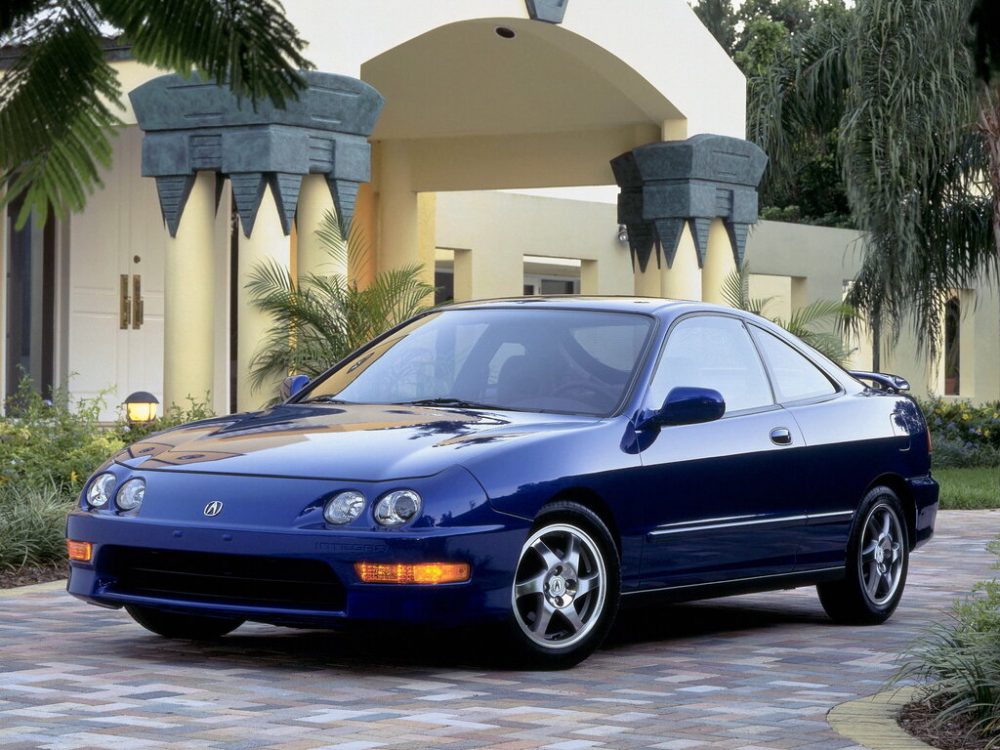Few cars capture the essence of late ’90s Japanese performance quite like the refreshed third-generation Acura Integra. Between 1998 and 2001, this three-door hatchback wrote the final chapter of a story that began in 1985, setting benchmarks that continue to influence automotive design today.
The third-generation refresh wasn’t just another facelift – it represented the culmination of Honda’s engineering prowess in the compact sports segment. From its razor-sharp handling to its high-revving powerplant, this Integra embodied the perfect balance of daily practicality and weekend thrills.
Engineering Excellence: The Heart of a Champion
The 1998 refresh retained the Integra’s winning formula while refining every aspect of its performance. At its core, the 1.8-liter four-cylinder engine showcased Honda’s mastery of naturally aspirated performance, particularly in the legendary Type R variant. Each engine was hand-assembled with the kind of precision typically reserved for supercars.
“The way my DC2 Type R pulls to redline is unlike anything else I’ve driven. It’s not just about the power – it’s the mechanical symphony and the pure connection you feel with the car.” – Mike Chen, Integra owner since 2003
The powerplant works in perfect harmony with one of the best front-wheel-drive chassis ever developed. The short-throw manual transmission, particularly the 6-speed in performance variants, delivers rifle-bolt precision that modern electronics struggle to replicate.
Even by today’s standards, the handling characteristics remain remarkable. The double-wishbone front suspension – a rarity in its class – combined with the multi-link rear setup creates a level of feedback and control that makes every corner an event.
Design Philosophy: Form Follows Function
The 1998 refresh brought subtle yet meaningful updates to the Integra’s appearance. Clean lines and perfect proportions define the three-door profile, while the updated front fascia adds aggression without sacrificing elegance. Key exterior improvements include:
- revised headlight assemblies with improved beam pattern;
- resculpted front bumper for better aerodynamics;
- updated tail lights with modern lens design;
- new wheel designs specific to each trim level;
- refined color palette including exclusive Type R options.
Inside, the cockpit exemplifies Japanese ergonomic design. The driving position is textbook perfect – the relationship between seat, steering wheel, and pedals feels natural from the moment you slide behind the wheel.
“After owning several modern sports cars, I still find myself missing the simplicity and functionality of my old Integra’s interior. Everything was exactly where it needed to be.” – Sarah Martinez, former DC4 owner
The instrument cluster prioritizes visibility, with the tachometer taking center stage – a clear indication of the car’s sporting intent. Quality materials and tight panel gaps reflect Honda’s commitment to build quality during this era.
Performance Legacy: More Than Just Numbers
The Integra’s influence extends far beyond its production numbers. This generation became the foundation of street performance culture, particularly in North America. The combination of reliable power, tunability, and accessible price point created perfect conditions for a thriving aftermarket community.
Honda’s VTEC technology reached new heights in this platform, especially in Type R form. The naturally aspirated engine’s ability to produce over 100 horsepower per liter while maintaining reliability set standards that influenced performance car development for years to come.
Track capability was built into the Integra’s DNA. Consider these competition-ready features:
- helical limited-slip differential in performance variants;
- factory-fitted strut tower bar;
- strengthened chassis mounting points;
- performance-oriented gear ratios;
- track-tested brake components.
Beyond the Spec Sheet
The Integra’s true magic lies in how it brings together all its components into a cohesive whole. It’s more than the sum of its parts – it’s an experience that continues to captivate enthusiasts decades after production ended.
Modern cars may surpass its performance metrics, but few can match its analog purity and driver engagement. The Integra represents the peak of naturally aspirated, front-wheel-drive performance cars.
Pros and Cons
| Advantages | Disadvantages |
|---|---|
| Exceptional handling dynamics with precise steering feedback | Limited rear passenger space due to three-door configuration |
| High-revving VTEC engine provides thrilling performance | Basic sound system by modern standards |
| Legendary reliability when properly maintained | Increasing difficulty finding unmodified examples |
| Strong aftermarket support and modification potential | Dated safety features compared to modern vehicles |
| Excellent build quality with long-lasting materials | Limited cargo capacity for longer trips |
| Driver-focused ergonomics and visibility | Premium fuel requirement for optimal performance |
| Strong resale value and collectibility potential | Sparse luxury amenities in non-Type R models |
The Acura Integra DC2/DC4 represents a high-water mark for analog sports compacts. Its combination of performance, reliability, and driver engagement creates an experience that remains relevant and desirable even as automotive technology continues to advance.

